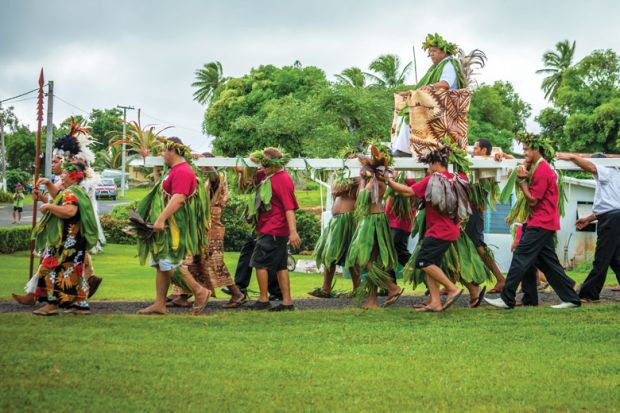New Zealand is pressing ahead with a decision to encourage research by and about Māoris and Pacific islanders by giving it up to seven times its current weighting in a major annual funding allocation.
A reference group has finished consultations on the design of the next iteration of the research quality evaluation exercise, the Performance-Based Research Fund (PBRF), which guides the distribution of NZ$315 million (£166 million) in research grants – making it the second biggest centrally administered tertiary education fund.
On recommendations from a 2019 review chaired by Linda Tuhiwai Smith, chair of New Zealand’s Māori Centre of Research Excellence and a pioneering critic of colonialism in education, the government will adopt a “more capacious” definition of research excellence.
The definition will “support diverse research cultures” by encompassing “the production of research, engagement and impact”, according to a cabinet minute from education minister Chris Hipkins. University staff will be able to demonstrate it by including “traditional outputs” in the evidence portfolios they submit for assessment.
The government will also increase the “subject area weighting” for Māori-related research from one to three. The weighting, which reflects the relative costs of research in different disciplines, helps to determine each university’s share of PBRF funding.
The change means that Māori research will be deemed more costly than any other type of research, including in clinical medicine, pharmacy and veterinary science. Its influence on funding will be further amplified through a new “funding weighting” of two-and-a-half for evidence portfolios submitted by Māori staff.
Mr Hipkins said these changes would ensure that the PBRF fostered the “intellectual infrastructure” to support “mātauranga Māori”, or Māori knowledge, in the education system. Pacific research and researchers will be similarly supported with a subject area weighting of two-and-a-half and a funding weighting of two.
The government’s decisions exceed the recommendations of the review panel, which advocated a subject area weighting of two-and-a-half for Māori research to help address the “critical undersupply” of researchers. Just 4.8 per cent of participants in the 2018 assessment exercise identified as Māori, who comprise about 17 per cent of the national population.
While Māori participation had risen from 3.7 per cent in the 2012 exercise, tertiary education consultant Dave Guerin said progress had been too slow. “Universities have been expected to increase the number of Māori and Pacifica staff for 30 or 40 years, so the government [is putting] a stronger lever in place. Universities tend to chase money wherever it is.”
The changes reflect a perception that “Western” science’s claims to be universal and objective have enabled its advocates to uncritically value it above other knowledge systems.
But representative group Universities New Zealand warned of “unintended negative consequences” of using a fund “that rewards excellence” to boost Māori participation, unless extra funding was provided. “Equity issues in research must be addressed, [but] the PBRF should [not] be the only mechanism to do so,” it said in feedback on the review’s report.
“A shift away from research outputs as the key evidence of ‘excellence’ is problematic,” it added.
University of Auckland sociologist Elizabeth Rata said the changes risked diverting Māori and Pacifica researchers into an approach “that doesn’t follow the scientific principles and methods”, under the misapprehension that this would “lead to success” in the globally connected higher education world.
Such students would obtain doctorates, “begin their early careers, receive recognition and have their work valued. Then at a certain point, they’ll come across the fact that their work is circumscribed by its limitations.”
后记
Print headline: New Zealand gives indigenous research big weightings boost




